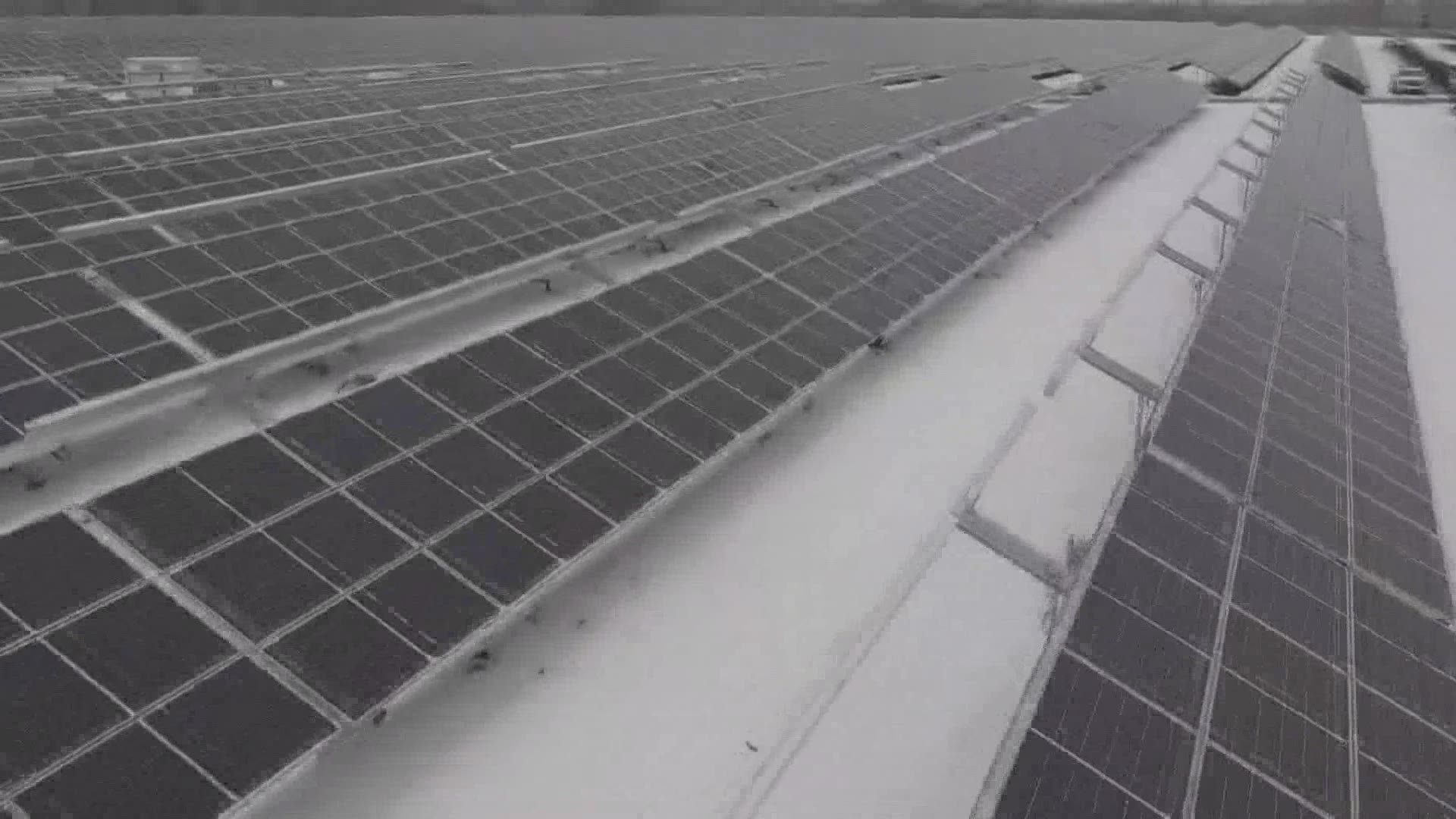AUGUSTA, Maine — The rows of solar panels stretch off into the distance at Dirigo Solar’s 100-acre project in Milo. It just about to be “turned on”, and developer Bob Cleaves said it’s a sign of how hot solar is in Maine right now—with 600 projects, large and small.
“These projects are increasingly attractive from an investment point because solar is becoming one of the cheapest forms of energy available,” Cleaves said Wednesday.
But he and other developers said the solar surge Maine is seeing has been threatened by Central Maine Power’s notice that it needs to make major upgrades, to substations to accept incoming solar power, and those upgrades could add millions of dollars to the cost of some projects.
CMP says the issue is the sudden and unexpected spike in proposed projects, with the company’s distribution system not ready to handle too much “two-way” flow of electricity. The notice sent to developers within the last two weeks sent shock waves through the industry. Cleaves said developers had already gotten CMP to project a cost to connect to its system, which had been figured into the development price and the required financing.
“And so immediately it made us concerned a number of projects would simply not pencil,” Cleaves said, referring to the large cost increases developers would have to pay for.
“And this was after relying upon these studies (by CMP) to purchase land and make grid deposits and the like.”
Solar advocates sounded the alarm. Gov. Janet Mills, who is relying on a large expansion of solar power to help the climate change fight, fired off a letter to the Public Utilities Commission, criticizing CMP and asking for an investigation.
On Wednesday, PUC chairman Phil Bartlett said he shared the concerns.
"It's legitimate to question why CMP didn’t find these problems in their initial round of studies.”
And CMP has apparently heard the complaints. Company executive chairman David Flanagan sent a letter to the Governor, PUC, and developers, acknowledging the problem.
“Bringing on 600 new solar projects, totally unexpected, more than any other state presented some issues with interconnection,” Flanagan said.
He said CMP engineers studied the problem and determined it required major upgrades at substations, costing from $1 million to as much as $12 million each—money that would need to be paid by solar developers.
Flanagan said he and some others saw "instantly” that kind of plan would present major problems to the solar industry and those who support it. But by then, the letter had already been sent to developers.
“I wish there had been more review before it went out, but I can’t unspill milk,” he said.
“All we can do is correct it, and that’s what we’re doing.”
Flanagan said CMP engineers have now found an alternative way to handle a large influx of solar power in the substations, and do it at a much lower cost. He said further studies are happening that could reduce those costs even further.
He promised that solar developers will be able to continue their projects on schedule and “without undue expense.”
PUC Chairman Bartlett said Wednesday the agency still will move to determine how CMP made the original determination. But he also said they need to do a larger, statewide evaluation of the electric grid to determine what needs to be done to handle the continuing expansion of solar and wind energy, as well as increased use of electric vehicles and electricity for heating—all of which will place larger and larger demands on the state electrical system in the coming years.

